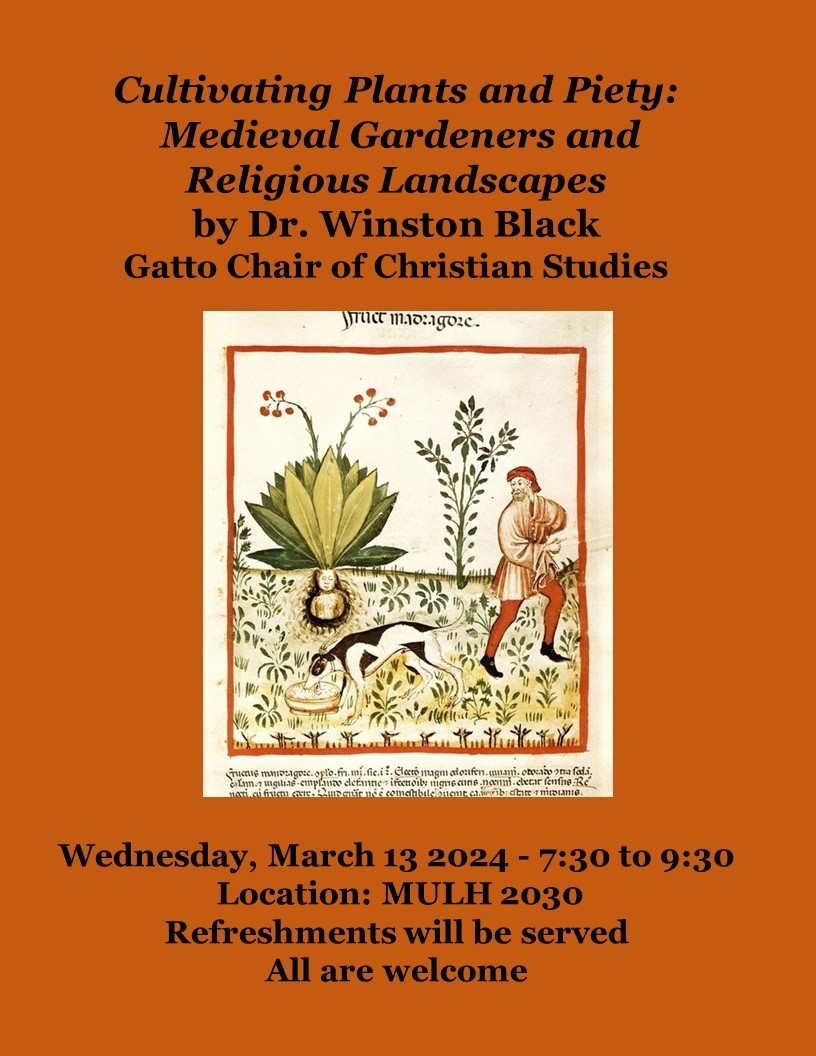
Gardens are among the most common, yet elusive, features of the medieval world. Every household had a garden of some sort, from a peasant’s vegetable plot to a great lord’s pleasure garden, but almost no physical traces remain. We must turn to art and literature to understand how gardens were planned, what was grown in them, and for what purpose. Religious figures—bishops and priests, monks and nuns—also kept gardens and were more likely than other medieval people to think and write about them in religious terms. Three medieval religious gardeners left striking accounts of their own gardens that they had designed or cared for: Walahfrid Strabo in the ninth century, Henry of Huntingdon in the twelfth, and Henry Daniel in the fourteenth century. In this talk, Dr. Winston Black explores how these gardeners, as clerics or monks as well as talented authors and naturalists, described their gardens and situated them in their own religious landscapes.

